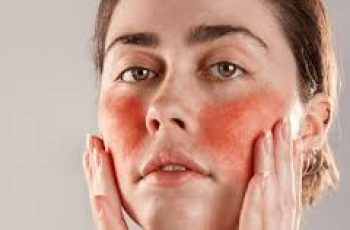How to Get Rid of Dry Skin on the Body
Dry skin goes hand in hand with winter, especially on the body. When the temperatures drop, we put on more clothes and are busy trying to keep warm, which means personal hygiene falls by the wayside. Today we’ll give you some tips on how to get rid of dry skin on the body and how to avoid peeling and discomfort.
How to Get Rid of Dry, Dead Skin?
Fortunately, there are many different ways to get rid of dry, dead skin on the face and body. It’s important to remember that all products meant for the body are usually too harsh for facial skin. This sometimes explains why many of us fall into the trap of focusing our skincare on the face and forgetting about the body. In the end, your face will show signs of aging and dryness more quickly. Here’s an example of a personal care routine and how it can help treat signs of dry skin:
Cleanse and wash your body every day, especially during the winter, otherwise dead skin cells, excess oil, and sweat can accumulate. Over time, flaky, dry patches can develop on the skin and lead to rashes on the back and chest.
Use a body scrub weekly, and remember to use it more often if you have particularly dry skin. This can be a physical exfoliation using ingredients like grains or pumice stones, or a liquid exfoliation using AHAs or BHAs (the most popular being lactic acid). You’ll find that many body wash formulas contain acids to aid in exfoliation.
Body brushing has an added benefit as it not only removes lingering dead skin cells, but it also stimulates blood circulation, making skin appear healthier and smoother. However, be sure to limit body brushing as this can be too harsh for the face.
Consistency is key. A good personal care routine can provide the same benefits as a daily skin care routine. You’ll notice that the skin on your body becomes noticeably smoother and continues to improve over time.
Consider your skin type so that you can find the best products for your routine. For example, a thicker, more nourishing face cream is better for someone with dry skin.
When your skin shows signs of dryness, here are some treatments to try. If you try at least one of these, you’ll notice an improvement in your skin’s condition.
Why is my skin suddenly dry and flaky?
If you find your skin is suddenly becoming dry and flaky, it could be due to:
Heat – Any form of heat, whether it’s from central heating, fireplaces, radiators etc, can reduce humidity and dry out the skin.
Weather – Seasonal changes can have a big impact on skin health and appearance. As temperatures drop, so does humidity, meaning skin tends to become drier in the winter months.
Harsh soaps and cleansers – Many soaps and cleansers contain ingredients that are too harsh on the skin, causing it to lose moisture and become uncomfortable.
Hot showers and baths – Yes, believe it or not, the temperature of your bath water can affect your skin, especially if you spend a lot of time in the bath.
Skin conditions – If you find yourself developing patches of dry skin that weren’t there before, you could have a form of eczema or psoriasis, both of which can occur if the skin becomes too dry. If you’re concerned you may have eczema, it’s best to contact your GP for further advice.
Your age, lifestyle and area of residence also need to be considered when trying to understand why you’ve suddenly developed dry and flaky skin. If you want to tackle the problem in the simplest and most effective way, check out simple personal care remedies you can try at home.
What are the best remedies for dry skin?
Here are some simple yet effective changes you can make that will have the biggest impact in treating dry skin:
Stop taking long hot baths and showers
As mentioned earlier, bathing with water that is too hot can worsen the skin and lead to more dryness. To avoid discomfort, try the following:
Limit bath time to less than 10 minutes
Keep doors etc. closed to keep humidity high
Use fragrance-free body wash
Use only warm water
Avoid rubbing and pat dry
Apply moisturizer while skin is still slightly damp so the cream can lock in moisture
Increase moisture in the surrounding air
Use a humidifier to maintain humidity and ensure your skin doesn’t dry out
Don’t use harsh clothing and detergents
If your skin feels dry, it can easily become irritated. Wear cotton or silk under thick sweaters that contain wool.
Use hypoallergenic detergents.
Use creams and ointments instead of lotions on your skin.
Choose ingredients that nourish the skin, such as shea butter, jojoba oil, glycerin, and hyaluronic acid.
Use ointments or creams, as they are thicker and generally lock in moisture better.
These four changes are the best start to treating dry skin in the most effective and fastest way. You can also combine them with other tips we mentioned earlier to get rid of dry skin on your body.
I hope you found some helpful tips on how to get rid of dry skin on your body in this blog. Once you establish a sound personal care routine and put the same effort into maintaining it, you will be amazed at the changes in your skin.
DQH Can I use salicylic acid first and then vitamin C?
It’s easy to create a skincare routine, but knowing how to use it is another thing entirely. In most cases, if you’re not getting the desired skin results, it could be due to the layering of conflicting ingredients. So, is it possible that salicylic acid and vitamin C are such ingredients? Or are these active ingredients the duo that’s been missing from your skincare routine? If you want answers, stick around because today we are going to explain the benefits of salicylic acid and vitamin C and how they can be used in your daily life.
What are the benefits of salicylic acid for skin?
Salicylic acid is one of the most commonly used beta hydroxy acids and is favored by many people with oily, acne-prone skin. This acid is derived from willow bark, and unlike its water-soluble relatives (called alpha-hydroxy acids), salicylic acid is oil-soluble, which means it can penetrate deeper into the lower layers of the skin. Once it reaches the lower layers, it can help unclog pores of excess sebum, dirt, bacteria, debris, and impurities. This results in clearer skin tones and greater definition.
Not only does salicylic acid benefit the underlying layers, but the outer surface of the skin benefits as well. When applied to the skin, salicylic acid removes the buildup of dead skin cells. This is accomplished by breaking the bonds that hold dead cells to the surface. Over time, this can cause the complexion to look dull and prone to acne, blackheads, and other blemishes.
If you’d like to learn more about salicylic acid and how it can improve your skin, check out this dedicated blog post from a beauty insider.
What are the benefits of vitamin C for skin?
Vitamin C is considered one of the most powerful antioxidants, which means it is very effective at fighting free radicals and preventing them from causing further skin damage. Examples of free radicals include pollution, central heating, UV rays and harsh climate. They attack proteins, fats and cell membranes as soon as they come into contact with the skin, causing signs of premature aging such as fine lines and wrinkles as well as hyperpigmentation, flaky patches of skin and loss of elasticity.
Many people usually prefer to use vitamin C in their morning routine as this ingredient gives the complexion a radiant glow. You’ll also find that vitamin C can target areas of hyperpigmentation, plumping the skin and reducing the appearance of fine lines and wrinkles.
The thing about vitamin C is that there are a lot of outdated studies going back to the 1950s that describe vitamin C as an unstable skin component. Thanks to improvements in modern technology, this is no longer the case as all products now contain a stable form of vitamin C.
Visit The Beauty Insider to learn more about vitamin C. So please check out our blog post.
Can I use salicylic acid first and then vitamin C?
Yes, you absolutely can. In fact, it’s thought that using salicylic acid before using vitamin C ensures it penetrates faster and works faster.
This is an efficient way to utilize two power sources, and the reason has to do with pH. For example, the skin’s natural pH is about 4.7, making it slightly acidic. Salicylic acid and vitamin C are also both acidic, and you’ll find that vitamin C is absorbed quickly into the skin. Therefore, using salicylic acid beforehand can increase the acidity of the skin and allow vitamin C to penetrate into the skin faster.
While this is considered an effective way to combine two powerful ingredients, you need to be aware of your skin type and how it reacts to certain active ingredients. Even people with perfect, normal skin can experience skin sensitivity and irritation. Therefore, always consult a doctor or dermatologist before using any new products on your skin.
It’s also important to follow skin application rules. In this case, you need to use the product correctly to ensure you get the best results for your skin. If you’re not sure what I mean, the basic rule for skin is to start with the thinnest consistency and work your way up to the thickest consistency. This prevents a barrier from forming on the surface, preventing other active ingredients from penetrating the skin.
Can I use salicylic acid at night and vitamin C in the morning?
Yes, absolutely, this is considered the most effective way to get returns without any adverse side effects. This is because there is enough time between applications to ensure that the skin’s pH levels return to balance.
You’ll also find that Vitamin C is rich in antioxidants and is perfect for use in the morning to ensure your skin is protected and looking its healthiest. Due to the small size of salicylic acid molecules, it is an acid that is able to reach the deepest parts of the skin. While this is effective at keeping skin clear, it also increases the risk of irritation and photosensitivity. Therefore, many people prefer to use powerful BHAs in their evening routine without exposure to UV rays, pollution, or harsh weather.
Warning: If you avoid using sunscreen every day, none of these ingredients will do what your skin needs. The combination of chemical peels and powerful ingredients increases the risk of further damage to the skin’s surface. Use SPF 50 every day to keep your skin protected and your lipid barrier healthy, even on cloudy days, keeping your skin in top condition.



